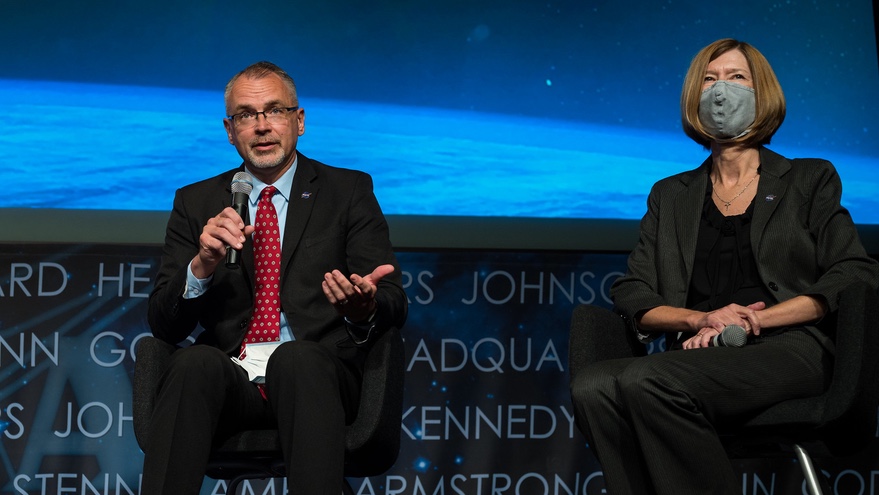WASHINGTON — NASA’s safety advisers say they’re closely watching a planned reorganization of the agency’s human spaceflight directorate to ensure it doesn’t adversely affect safety.
NASA announced in September that it was splitting its Human Exploration and Operations Mission Directorate (HEOMD) into two organizations, the Exploration Systems Development Mission Directorate and Space Operations Mission Directorate. The former would be responsible for programs linked to the Artemis lunar exploration initiative and future Mars exploration, while the latter handles the International Space Station and low Earth orbit commercialization. The split reverses a merger a decade earlier of NASA’s exploration and space operations directorates that created HEOMD.
At a Jan. 27 meeting of the Aerospace Safety Advisory Panel, members said they were closely following the planned split of HEOMD into two organizations. “The execution of the realignment will have implications for safety and risk,” said Patricia Sanders, chair of the panel.
Sanders and other members of the panel cited findings from the final report of the Columbia Accident Investigation Board (CAIB) in 2003, which cited organizational causes as one of the reasons for the loss of the shuttle and its seven-person crew. That included “cultural traits and organizational practices detrimental to safety and reliability” such as a lack of effective communication of safety information and stifling of differences of opinion.
“We have to really think carefully about these lessons,” said Sandy Magnus, a panel member and former astronaut. She cited a passage in the report that concluded “changes in organization structure should be made only with careful consideration of their effect on systems and their possible unintended consequences.”
Those consequences, she added, include increases risks of errors “as old ways of doing things compete with the new” and a loss of institutional memory. “It’s no small thing to undertake an organizational change,” she concluded. “I encourage NASA to seek input from internal and external entities as they contemplate this, and really consider the lines of communication, authority and accountability that are being established.”
That split of HEOMD into two directorates is still being implemented. “That structure has gotten the approval through the agency,” said Jim Free, associate administrator for exploration systems development, at a Jan. 18 meeting of the NASA Advisory Council’s Human Exploration and Operations Committee.
That new structure, though, still needs approval from the White House’s Office of Management and Budget and Congress, as well as unions representing agency employees. “We are hoping that in the very near term the organization will be approved by all our stakeholders,” he said.
Free and Kathy Lueders, NASA associate administrator for space operations, said at the meeting they were working on various issues, such as duplication of roles and functions. “There will be some duplication, but our tenet was, let’s minimize the duplication. Let’s get the mission management at the right level,” Free said. That includes sharing some common functions between the two directorates.
“Now, while we’re waiting for final stakeholder approvals, it doesn’t mean we’re just waiting. We’re working that next level of what does this mean structurally to be able to be off and running as soon as we get that final approval,” Lueders said.
The Aerospace Safety Advisory Panel took place on NASA’s Day of Remembrance, held on the 55th anniversary of the Apollo 1 accident that killed three astronauts and which also commemorated the losses of the shuttle Challenger in 1986 and Columbia in 2003. Later in the day, NASA’s senior leadership held a “safety stand-down” panel discussion which, while not directly mentioning the restructuring of HEOMD, did discuss the importance of open communications on safety issues.
“Our decisions have consequences,” said Bob Cabana, NASA associate administrator and a former astronaut, who showed off his dog-eared copy of the CAIB report at the event. “That’s why it’s so important that we have all the knowledge we can possibly have when we make our decisions, that their decisions are made on the best data possible. And the only way we can do that is if everybody has a voice. We have to create an environment where everyone participates.”
